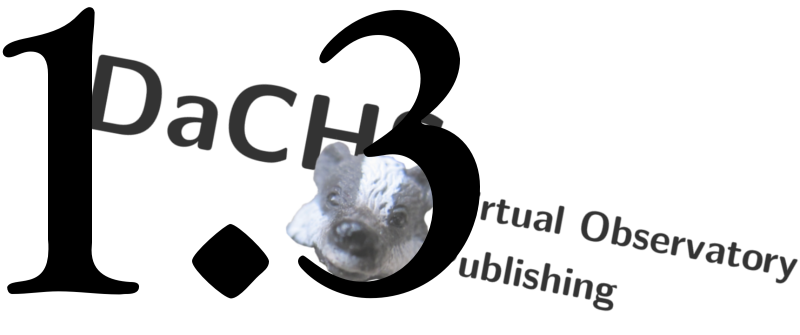DaCHS 1.3 is out

Almost a year has passed since release 1.2 of DaCHS – I've let the normal autumn release slip last year because there weren't so many release-worthy new features in DaCHS at the traditional release time (i.e., after the College Park interop), and also because running betas when you do need a new feature is a fairly stable thing by now.
But here it finally is: Release 1.3 (tarball for the die-hard self-builders; everyone else just switches back the release branch as necessary and then runs an update/upgrade cycle).
Here's the commented changelog:
- New //ssap#view mixin that should be used for future SSAP services, and that existing SSAP services should migrate to at some point. See A new view on SSAP in DaCHS on this blog for details.
- Columns can now be hidden from TAP/ADQL (and other interfaces) by setting hidden="True".
- There is now a setting [web]maxSyncUploadSize=500000 (meaning: about 500 kByte) as the default upload limit on sync queries. In compensation, clients uploading too much now receive a more useful error message (except it doesn't reach TOPCAT users most of the time because it does chunked uploads). To get back the behaviour of 1.2 (which is probably ok if you can live with the occasional resource hog), add maxSyncUploadSize=20000000 to your /etc/gavo.rc.
- Adding support for https (certificate reading, certificate updating with letsencrypt, registering alternate endpoints, no WebSAMP with https). See HTTPS in DaCHS on this blog for details.
- New source_table and preview columns in obscore. If you're using the various obscore mixins, this should be automatic. If you have defined views manually, you will have to amend these (and have a broken obscore until a dachs upgrade ran without error).
- No longer producing arraysize="1" in VOTables for scalars (except char, for compatibility with a legacy TOPCAT workaround; see VOTable 1.3 Erratum 3 for background information).
- Support for draft TIMESYS in VOTable (with STC 2 annotation; ask about details if you're interested. This is for draft VOTable 1.4 and probably only relevant to you if you're publishing time series).
- You can now add targetType and targetTitle properties to URL-valued columns to help Aladin figure out what to do with URLs (see Datalinks as product URLs in the reference documentation).
- New gavo_transform, gavo_ipix, and gavo_urlescape ufuncs for ADQL, fixed gavo_urlescape to have acceptable performance.
- New generating CatalogResource records with auxiliary capabilities in accordance with Oct 2018 VODataService WD.
- //soda#sdm_genDesc now matches accref rather than pubDID by default. If you use Datalink with SSA and have a custom pubDID schema (or no index on accref), add a useAccref="False" to your descriptorGenerator statement.
- There is now a --foreground option for dachs serve start. This is mainly to play nice with systemd, and indeed, the Debian package now comes with a systemd unit file. I'm not terribly familiar with systemd, so please have an eye on DaCHS controlled by systemd and let me know if you see something that's not as it should be.
- Fixes for various bugs (most notably: escaped quotes in ADQL, WCS in SIAP cutout products) and many minor improvements. Check out the source tree (still via subversion) and read the changelog if you want to know the whole truth.
On systems running from the Debian package, the update should be automatic with the next system upgrade. However, you'll be saving yourself quite a bit of headache if you check the health of your installation before the upgrade; see Upgrading DaCHS in the operator's guide on how to upgrade professionally.

![[RSS]](../theme/image/rss.png)